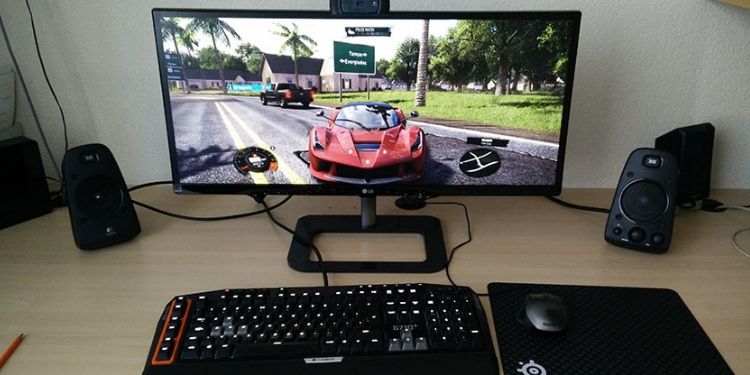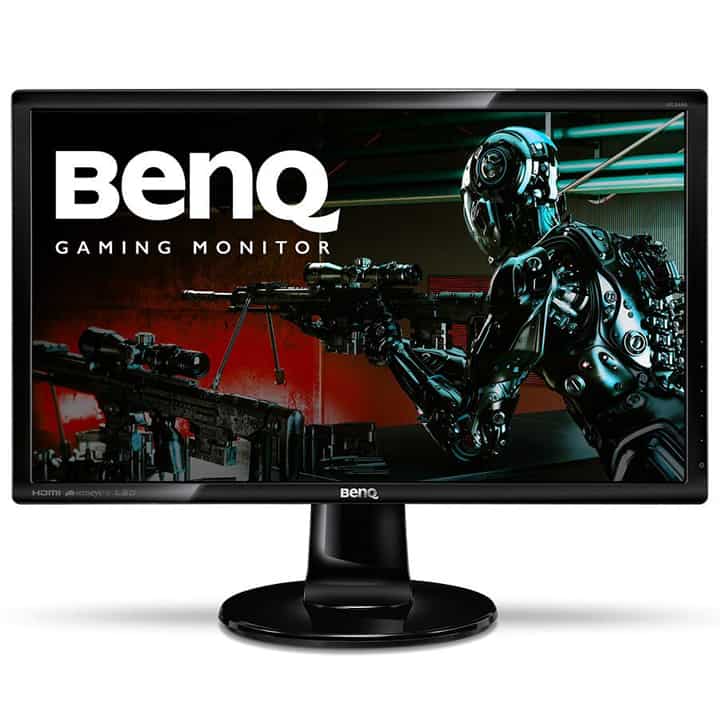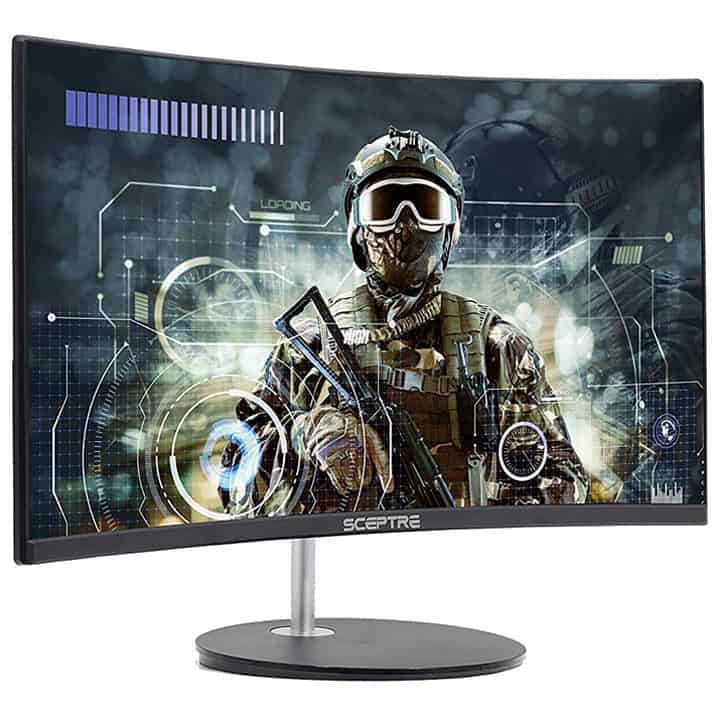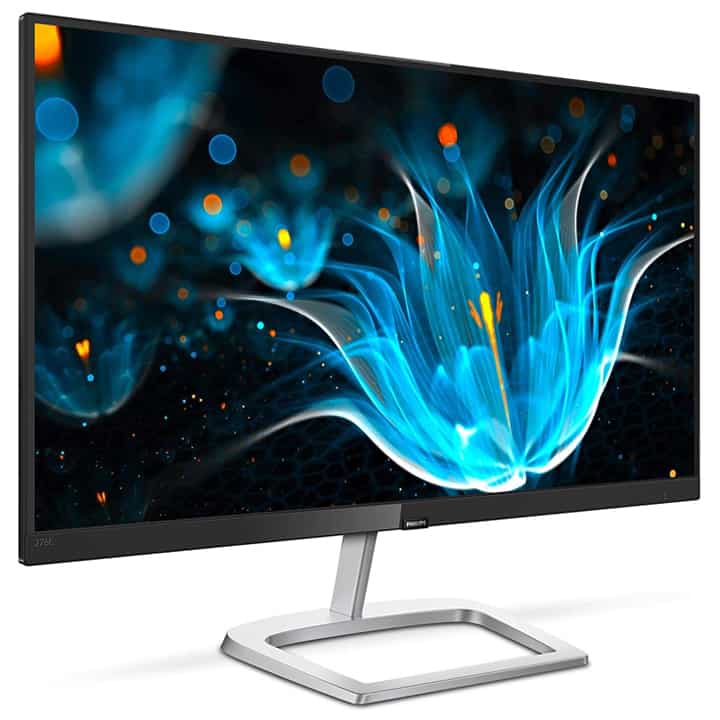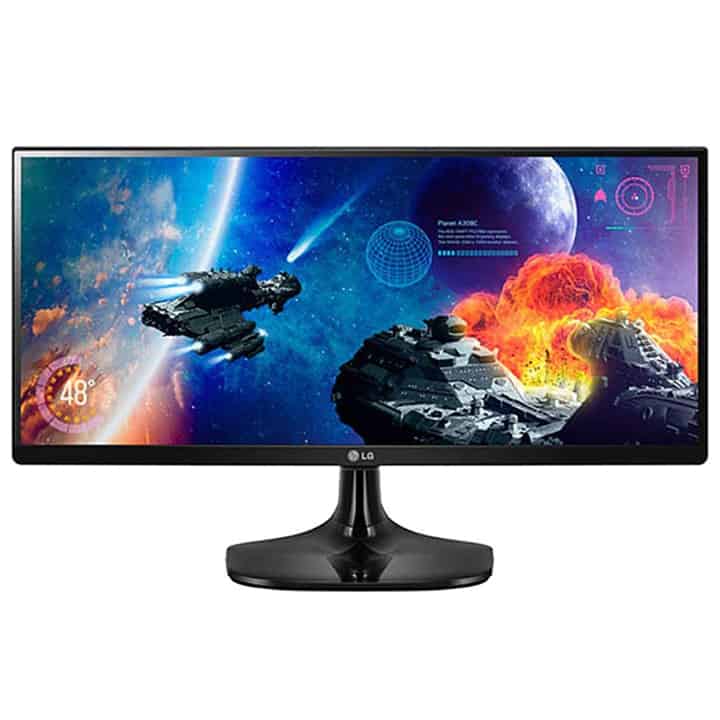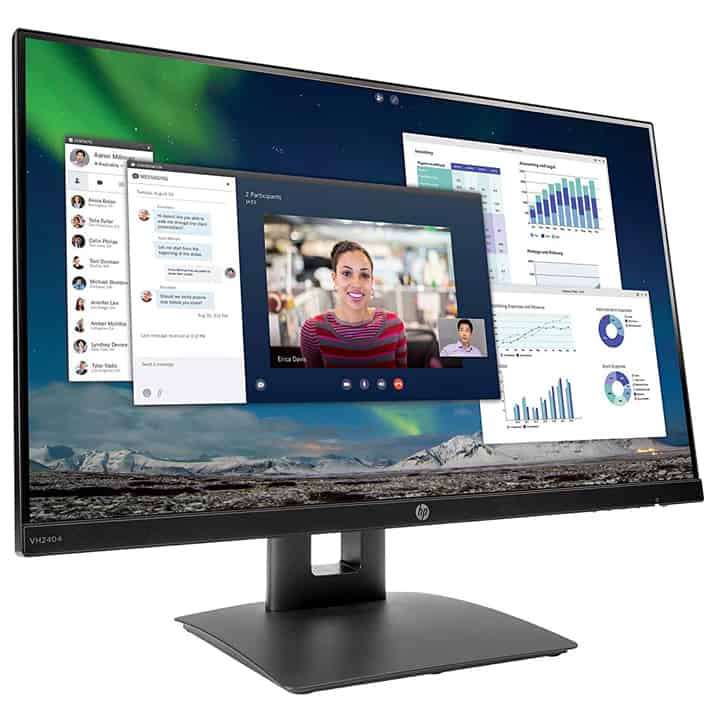Even the most powerful gaming computers would offer a terrible gaming experience if they were to be paired with junk monitors. And vice versa, even mediocre gaming rigs can offer a shockingly nice gaming experience if paired with a decent monitor.
Knowing this, we set out to see how low you can go before seriously sacrificing performance, and the sweet spot of value and affordability seemed to be just under $150. Knowing this, we set out to find the best gaming monitor under $150 and rounded up our final five here.
Fast and responsive
BenQ GL2460HM
- Refresh Rate: 75Hz
- Size: 24”
- Response Time: 2ms
- Aspect Ratio: 16:9
- Resolution: 1920x1080
- PPI: 92
- Panel Type: TN
Affordable curved monitor
Sceptre Curved Monitor
- Refresh Rate: 75Hz
- Size: 24”
- Response Time: 4ms
- Aspect Ratio: 16:9
- Resolution: 1920x1080
- PPI: 92
- Panel Type: VA
Best cheap
Phillips 276E9QDSB
- Refresh Rate: 60Hz
- Size: 27”
- Response Time: 5ms
- Aspect Ratio: 16:9
- Resolution: 1920x1080
- PPI: 82
- Panel Type: IPS
Affordable ultrawide monitor
LG 25UM56P
- Refresh Rate: 60Hz
- Size: 25”
- Response Time: 5ms
- Aspect Ratio: 21:9
- Resolution: 2560x1080
- PPI: 111
- Panel Type: IPS
Highly adjustable stand
HP FHD monitor
- Refresh Rate: 60Hz
- Size: 24”
- Response Time: 5ms
- Aspect Ratio: 16:9
- Resolution: 1920x1080
- PPI: 92
- Panel Type: IPS
Table of Contents
1. BenQ GL2460HM
Fast and responsive monitor
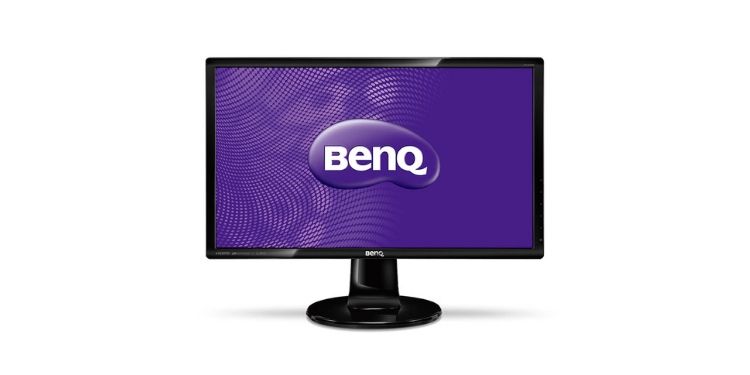
- Refresh Rate: 75Hz
- Size: 24”
- Response Time: 2ms
- Aspect Ratio: 16:9
- Resolution: 1920x1080
- PPI: 92
- Panel Type: TN
- Several eye care features
- Quick response time
- Lackluster stand
When it comes to picking the best monitor under $150 for gaming, nothing matters more than pixel responsiveness, and the quickest most responsive monitor on our list is the BenQ GL2460HM. This monitor sports a 75Hz refresh rate and an impressive 2ms response time.
This translates to a much smoother gaming experience than what you’ll find on 60Hz monitors, or those with higher response times. It won’t be as buttery smooth as some of the 144Hz monitors on our monitors under $200 list, but it’ll still be a definite upgrade from a slower 60Hz model.
Additionally, since we all know most gaming happens in poorly lit rooms, this monitor comes equipped with a handful of eye strain reducing features. There is a low blue-light mode which helps reduce eye strain in low light as well as a ZeroFlicker backlight. These two features will go a long way towards preventing eye strain or long term eye damage if you play at night with the lights off, which you technically shouldn’t do but we all do anyway.
This monitor also comes with built-in speakers, though they aren't the best. The only real gripe we had with this particular monitor is that the stand lacks pretty much any adjustment and looks pretty tacky. It’s made from a super glossy black plastic that is easy to keep clean but has what is in our subjective opinion a pretty undesirable look to it.
2. Sceptre Curved Monitor
Affordable curved monitor
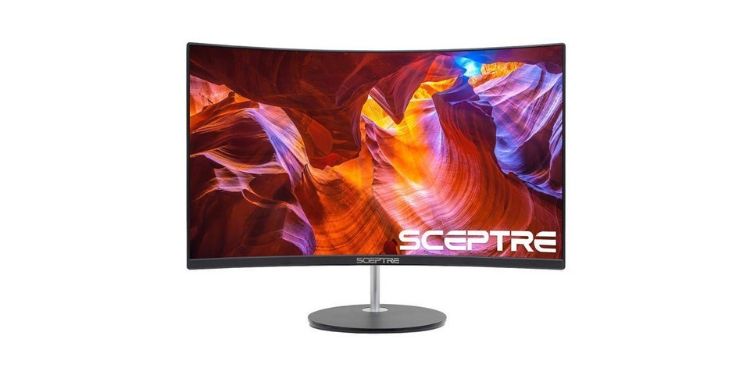
- Refresh Rate: 75Hz
- Size: 24”
- Response Time: 4ms
- Aspect Ratio: 16:9
- Resolution: 1920x1080
- PPI: 92
- Panel Type: VA
- Curved screen
- Relatively high refresh rate
- Minimal adjustment
When looking for cheap monitors you’ll notice a lot of “clone” products that have identical looks and specs but come from different manufacturers, or in some cases literally the same monitor with multiple names from the same manufacturer.
Personally, I doubt anyone wants to read a list that is a review of five identical monitors, so we set out to populate this roundup with unique and compelling cheap computer monitors, such as this curved monitor from Sceptre.
Curved monitors are incredibly immersive when playing games or watching movies because of the way the monitor fills some of your peripheral vision. When paired with the smooth motion of a 75Hz refresh rate this monitor offers an awesome experience, especially in something like a racing game where the scenery is blowing past you.
Much like the BenQ monitor, this monitor sports a no flicker backlight and a blue light filter that helps if you game in the dark. In fact, some studies have even found that curved monitors can help further reduce eye strain when compared to flat monitors, which makes curved monitors great for work too.
Again, the main complaint we have with this monitor is the stand. While this stand looks nice for the price, it only adjusts 15 degrees in tilt and nothing else.
3. Phillips 276E9QDSB
Best cheap monitor for vivid colors
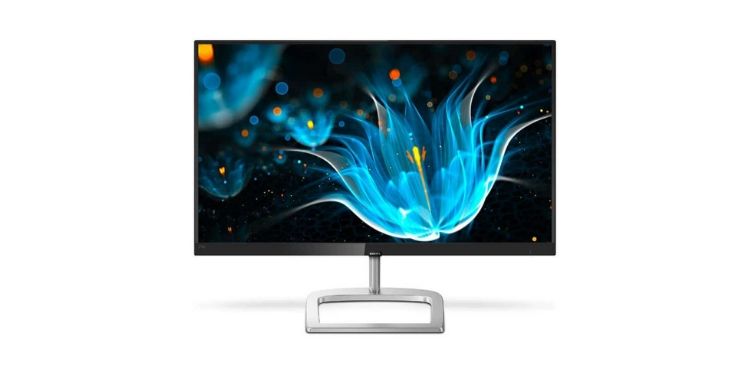
- Refresh Rate: 60Hz
- Size: 27”
- Response Time: 5ms
- Aspect Ratio: 16:9
- Resolution: 1920x1080
- PPI: 82
- Panel Type: IPS
- Incredibly vibrant and accurate colors
- 27-inch size
- Low refresh rate
For those looking for a good cheap monitor for not only gaming but also color critical work, the Phillips 276E9QDSB is the best on the market. Aside from the terrible mangled mess of a name-- which is sadly still all too prevalent in tech-- this is probably the most beautiful and visually striking monitor on our list from the sleek stand, to the thin bezel, to the explosive colors.
This monitor covers 124% of the sRGB color gamut and 93% of the NTSC color gamut. This means it is more than suitable for color critical work such as graphic design and image or video editing. This also makes it awesome for watching movies as the color really pops. This is especially noticeable with movies like Grand Budapest Hotel, or really any Wes Anderson film, where there is a high contrast color palette.
Paired with the 27-inch size this monitor is a media powerhouse, whether you’re consuming it or making it. The downside of this monitor is it’s relatively low refresh rate, maxing out at a meager 60 FPS.
4. LG 25UM56P
Affordable ultrawide monitor
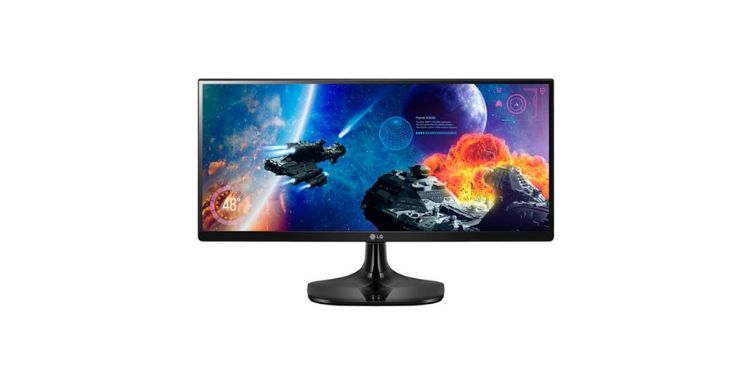
- Refresh Rate: 60Hz
- Size: 25”
- Response Time: 5ms
- Aspect Ratio: 21:9
- Resolution: 2560x1080
- PPI: 111
- Panel Type: IPS
- Ultrawide aspect ratio
- 4-screen split
- Low refresh rate
Ultrawide monitors have been gaining a lot of popularity in the last few years, and there’s a list of good reasons for it. For starters, the 21:9 aspect ratio is very popular with filmmakers so most movies, with the exception of things like IMAX, are shot in this aspect ratio. This makes ultrawide monitors like the LG 25UM56P awesome for getting a cinematic experience right in your home.
Additionally, since this list is for gaming monitors, gaming on an ultrawide monitor offers heightened immersion in much the same way that a curved monitor does: by filling more of your peripheral vision. Filling more of your field of view lets you get more immersed in what’s around you and can even give you an advantage in some games. A wider field of view in a game like Rainbow 6: Seige can make the difference between only guarding one door and being able to see two entrances to a room at once (although many games don’t allow you to use the full field of view since it would be a fairly large competitive advantage).
Finally, ultrawides are great for productivity as it allows you to easily set up as many as four different windows on your screen as though you had multiple monitors. LG has an especially great integration of this feature and makes this a well-rounded monitor for almost any use.
5. HP FHD monitor
Cheap monitor with a great stand
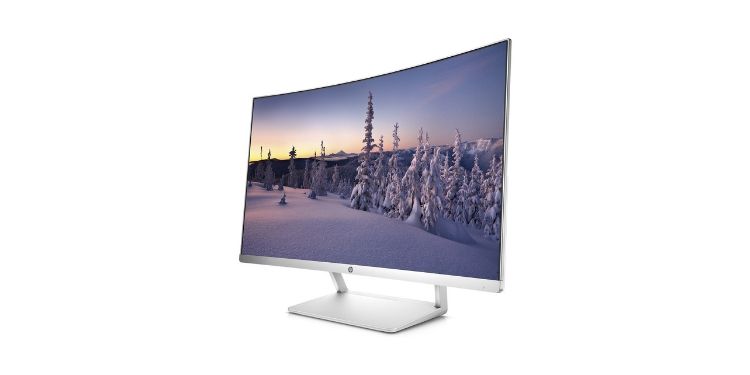
- Refresh Rate: 60Hz
- Size: 24”
- Response Time: 5ms
- Aspect Ratio: 16:9
- Resolution: 1920x1080
- PPI: 92
- Panel Type: IPS
- Highly adjustable stand
- Very thin bezels
- Low refresh rate
The last monitor on our list actually solves the major problem we were complaining about with the first few monitors we looked at: the stand. While all of the previous monitors on our list only adjust in angle by maybe a couple dozen degrees, this HP monitor does so much more.
This monitor can be adjusted in height, it can tilt through a much wider range of angles than the other monitors on this list, and it can even be pivoted into a vertical layout. This portrait layout capability makes this one of the best monitors on our list for a multiple monitor setup, which works well with the thin bezel design.
Unfortunately, as with most cheap 1080p monitors, the refresh rate can be a bit underwhelming. Don’t expect to get the most buttery smooth action out of your games, but overall this monitor does a great job handling colors and deep blacks for the price.
How to Pick the Best Gaming Monitor Under $150 for Your Needs
Even though we’ve already looked at our picks for the best affordable monitor you might still have a lot of questions. Before spending any of your hard earned money, let’s look at some key things to keep in mind when shopping for a monitor.
Refresh Rate
For a monitor that is intended for gaming, this is arguably the most important thing for most people to keep an eye on.
The refresh rate is how many frames per second a monitor can display an image. On our list we have monitors that are either 60Hz or 75Hz, meaning they can display a max of either 60 or 75 frames per second respectively.
Higher frame rates create smoother looking motion with less motion blur which looks great in fast-paced games that involve a lot of movement such as driving games or even something like Doom 2016.
It’s important to remember, however, that a monitor can only take advantage of high frame rates if your computer can run the game at high frame rates, so it’s not always necessary to have a 144Hz monitor if you play demanding AAA titles and don’t have something like an RTX2080 in your system.
Response Time
Response time is closely related to refresh rate in a lot of ways and is the second most important aspect that many gamers will want to keep in mind. Response time is a measurement, in milliseconds, of how long it takes for each pixel to change from one state to the next, usually white to black or grey to grey.
This is important as some VERY cheap monitors will have response times so high that the pixels can’t completely change from one color to the next before the next frame is ready. This results in a streaky and blurry look. However, this only happens if you have response times over 17ms, which none of the monitors on our list– or any of our lists– come even remotely close to.
At lower response times you can actually give yourself a slight competitive edge. For example, a monitor with a 10ms response time will show an enemy emerging from a doorway a brief moment later than a monitor with a 2ms response time. This is actually significant since the average human response time is about 17ms. Shaving even just a few milliseconds off the time it takes for each frame to appear on your monitor can give you a quantifiable advantage in close situations.
Resolution and PPI
Resolution is something that most people are familiar with at least to some degree. Terms like “1080p” and “4k” are pretty common in the vocabulary of even non-tech savvy people. Resolution is a measurement of how many pixels there are on a screen in total, and is given in two measurements, horizontal pixels and vertical.
Most of the monitors found on our list, and at this price in general, are going to be standard 1080p meaning they have 1920 by 1080 pixels. The ultrawide we looked at from LG is the one exception because it has more pixels to accommodate it’s wider aspect ratio, coming in at 2560 by 1080.
PPI, on the other hand, stands for pixels per inch and is a measurement of how densely packed the pixels are on a screen. This differs from the resolution since resolution is the total number, so larger monitors of the same resolution will have lower pixels per inch, or pixel density.
The higher the density of pixels, the more clear an image will appear.
Color Gamut
Finally, in our review of the Phillips monitor, we mentioned the color gamut. This is actually a fairly complex matter and it involves a lot of color science, but in short, color gamut is a standardized range of colors that are established by leaders in design and video editing, such as Adobe.
Many of the monitors on this list aren’t color calibrated at all meaning they have no specific color gamut, but the Phillips monitor covers over 100% of the Adobe sRGB color gamut which is used by most graphic design and video editing professionals. This ensures that how something looks on your screen while you work on it is an accurate and true representation of the colors of that image or video.
This is very similar to how reference style headphones work and ensures consistent quality across various work stations and end-user systems. This is very important to keep in mind and look for if you do any kind of photo or video editing either for a living or as a hobby.
We always try our best to give the most accurate recommendations and satisfy all of our beloved readers. If every monitors that we’ve listed above are a little bit outside of your current budget, head over to this list of best gaming monitor under $100.
